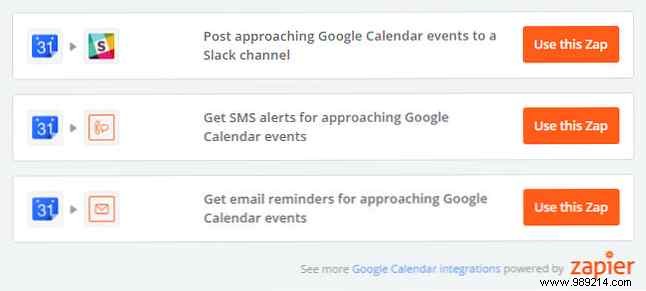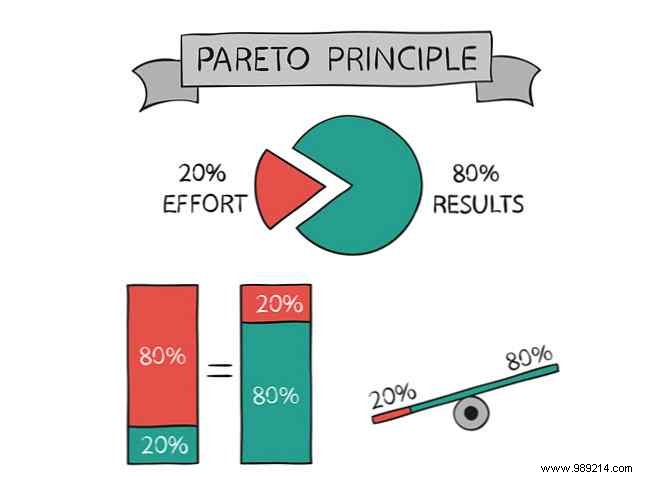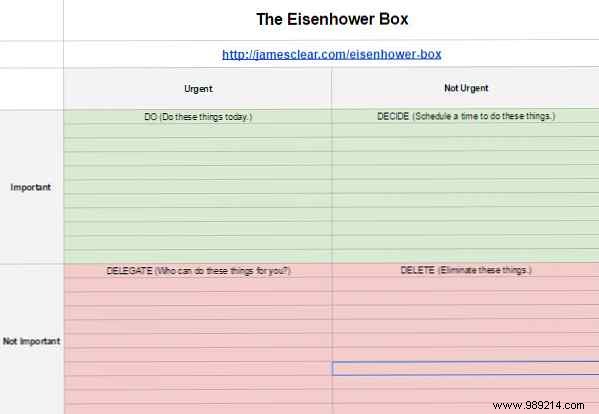Steve Jobs had his famous "reality distortion field".
The truth behind the superpower is less magical but no less powerful. It was his own unique mental model of his that helped him reframe the world and ambush others with his world-changing ideas..
Steve Jobs just saw things differently.
Mental models are the invisible spectacles through which we see the world. In a nutshell, they are sweeping away “laws” we build internally that help us understand the world. Mental models are generated by experience, nurtured by observation, and enhanced by reason.
But like any lens, mental models can become myopic or blurry. This is why it is so important to continually work on the mental models we adopt for ourselves.
An entrenched but faulty mental model can prevent waves of correct thinking. For example, confirmation bias blinds us to alternative ways of interpreting information. The correct mental model, one that helps us remove the filters around our thoughts, can make us smarter when it comes to making decisions..
In short, we can hack the way we think by launching the correct mental model or cluster bomb of mental models into our animal brain.
Think of tools like palettes to help you paint your "thoughts." They can help us find new approaches to old thought patterns. In some cases, they can help us create entirely new mental models.
So let's integrate some mental models into our daily routines and gain momentum for better time management, decision making and self reflection.
Picture yourself getting out of bed.
This simple event done at the right time starts your day. The “activation energy” for this activity is low because it is a habit.
Using activation energy as a mental model takes us back to chemistry class, where we learned that energetically challenging reactions require a large amount of activation energy.

Any productive habit or task follows the same pattern. The more complex the job, the higher the activation energy needed to start and maintain it. Also, the greater your desire to procrastinate.
The trick to overcoming this barrier is to decrease the mental energy required to begin a task. In addition, you can redesign the work by changing the conditions that prevent it from the first step. For example, you could break down a complex task into small, simple steps.
Remember, it all comes down to exercising one thing:our willpower muscle. How To Work The Willpower Muscle How To Work The Willpower Muscle Some people don't have a willpower problem. What makes these productive people different? As a result, there is a lot of research on the subject, and the answer turns out to be quite simple Read More So, throw everything at it. Even the clock.
Using it as a mental model
One of the simplest tools to help lower activation energy is the timer on your phone. When something is holding you back, just tell yourself to work two minutes and no more .
Let's borrow another idea from Shawn Achor and his book. The Happiness Advantage (HA) . He suggests that “we must identify the activation energy (the time, the choices, the mental and physical effort required) and then reduce it.”
Reducing this activation energy by even 20 seconds offers benefits that can cascade throughout the day.
The Happiness Advantage:The 7 Positive Psychology Principles That Fuel Success and Work Performance The Happiness Advantage:The 7 Positive Psychology Principles That Drive Success and Work Performance Buy Now On Amazon $8.00
This is Parkinson's law and it just says that the amount of time you have to finish a task is the amount it will take. To be more productive, stimulate your brain by shortening the time you need. It is an observation and not a hard rule. But thank Cyril Northcote Parkinson the next time you're working on a tight deadline. Even though he used it in a very specific context-The British Civil Service.
That doesn't mean to procrastinate and use last-minute panic to get a task done. Instead, whenever you have to do something, experiment with shorter deadlines.
Using it as a mental model
Don't let external deadlines add to the pressure at the last minute. Pre-plan and set your own micro-deadlines for your project. Micro-terms should be as short as possible. You can also adjust your focus with the time lock concept.
Use a simple timer for hourly deadlines or a Google calendar notification for longer projects. Use Zapier with Google Calendar to set up alerts in Slack, email, or SMS as your deadline rolls around.

Think of a multitasking brain like a fragmented hard drive.
The brain, like our hard drive, continues to function, but is it an optimal use of its resources? Multitasking opens multiple doors to distractions. As this Microsoft study shows, the drop in productivity can be up to half a day!
The Single vs. Multitasking Debate Single vs. Multitasking:Which Is Best for Productivity? unique vs. Multitasking:What's Best for Productivity? Multitasking is a common method to increase productivity. Turns out it's not necessarily the silver bullet for productivity. The key is knowing when to multitask. Reading More might be over, but the latter is still worn by many as a badge of honor. Get into the single task habit by focusing on one big goal. Get him out of the way and onto the next one. Finally, use mindfulness to turn off your computer and phone when you're done with work for the day.
Using it as a mental model
There are many ways to accomplish a single task. Some call for adjustments to our habits, while others need stronger mental bodyguards. Here are some ideas and tools to focus on one thing at a time.
Close your email.
Set up your computer with the right tools to help with focused work 3 Ways to Stop Multitasking and Stay Focused to Be More Efficient and Productive [Windows] 3 Ways to Stop Multitasking and Stay Focused to Be More Efficient and Productive [Windows] En MakeUseOf we've written countless articles on how to multitask. As a result, however, multitasking messes with your brain. Research shows that multitaskers are often "more susceptible to interference from ... Read More .
Always have a browser tab open or set limits with Chrome extensions like XTab.
Block notifications and distract social sites with apps like Freedom and Self-Control.
Plan your pending tasks with tools like Any.do or OneTask (Mac).
Vilfredo Pareto never got to see such a universal principle in his life..
The Italian economist just noted that 80% of the wealth and land were controlled by only 20% of the people. The “80-20” rule of thumb finds application in many areas of our lives, but it is commonly misused. Observation simply states that 80% of the results can be attributed to 20% of the causes.

Today, in our Zen for Productivity, we say that 20% of our efforts create 80% of our results. The percentages are misleading as the line between efforts and results is not always so clear. But the truth is that most things in life are not that uniform, so to get the job done we must learn to focus on what matters most.
Using it as a mental model
Follow the observations of the Pareto Principle to remove stress from productivity 4 ways to remove stress from productivity 4 ways to remove stress from productivity With a few well-targeted changes, you can increase your productivity by leaps and bounds. Apply these simple methods to your life and the result is what you'd expect:work better with less effort. Read more . Look for the "vital few" in the noise of the "trivial many." Here are some Pareto experiments:
In a nutshell, it is the famous quote that led to the Eisenhower Decision Matrix. Any decision based on time can be placed in one of the four quadrants of the matrix.
By deciding between urgency and importance, you can not only prioritize your daily tasks, but also your life goals.
Using it as a mental model
Use the Eisenhower Matrix to not only decide the goals that matter, but also to eliminate the tasks that don't.
James Clear asks us to clarify our goals because it can be hard to eliminate time-wasting activities if you're not sure what you're working on. Provides an Eisenhower box spreadsheet template.

Eisenhower.me provided the above video and a helpful Eisenhower Notepad to accomplish your goals. There is an online application if you don't like pen and paper.
This colorful chart from Xerox (PDF) uses color to highlight the relative importance of tasks. Important but not urgent. It is the most productive area to spend your time.
Affluence.com's Priority Matrix has apps for Windows, Mac, iOS, and Android.
Think outside the box. Look at the problem from different angles and solve it indirectly..
Because it could be your most important survival skill in the workplace of tomorrow, where innovation will be the mantra. Edward de Bono said it best:
Lateral thinking is of immense importance in group brainstorming sessions or any collaborative project. Our minds tend to think in straight lines when we need to see problems in a new light and come up with elegant solutions.
Using it as a mental model
Lateral thinking is one of the most difficult mental models to use because you have to train yourself for it. But the benefits are huge, from better creativity to heightened awareness. The good news is that lateral thinking can be learned.
Take up a creative hobby or play lateral thinking puzzles. Develop a habit of seeing things differently. Use Visual Mind Maps 8 MS Word Templates That Help You Brainstorm And Brainstorm Your Ideas Quickly 8 MS Word Templates That Help You Brainstorm And Brainstorm Your Ideas Quickly Free Word templates are not just beautiful documents, resumes perfect and cover pages. They can also be vital for brainstorming and mind mapping. Here are eight Word templates for your ideation needs. Read More Find apps like Oblique Strategies or Oflow to unlock yourself.
Thanks to this metal model, you can sit in your armchair and ask for anything from a book and a tractor.
As Jeff Bezos says, the short term can knock you into complacency. To work on things that matter, you just need to project yourself into the future and think about what a life of “no regrets” will look like.
The Regret Minimization Framework is for the big furry goals in your life. It can help you clarify your goals, put them in the Eisenhower “Important but not urgent” box, and set up other frameworks for planning the road ahead.
Using it as a mental model
The best tool for starting your own regret minimization framework is to educate yourself. For me, it started with a bucket list. For you it could be any other soul searching exercise.
What about the diary? How to start a journaling habit with 7 simple templates? How to start a journaling habit with 7 simple templates? If you have a journal template, you have a great advantage:you don't have to figure out what to write! Templates save time and also reduce startup friction. Read more ? An exercise in self-questioning through a month can bring repressed desires to the surface and help you find ways to minimize future regrets.
Charlie Munger is known for using a screen of mental models to evaluate investment opportunities. If you can, grab a copy of Poor Admiral Charlie For a life education in 500 pages..
What are the little systems in his world that help him stay balanced and productive? What is the mental model that really works for you above anything else? And which one is holding you back?